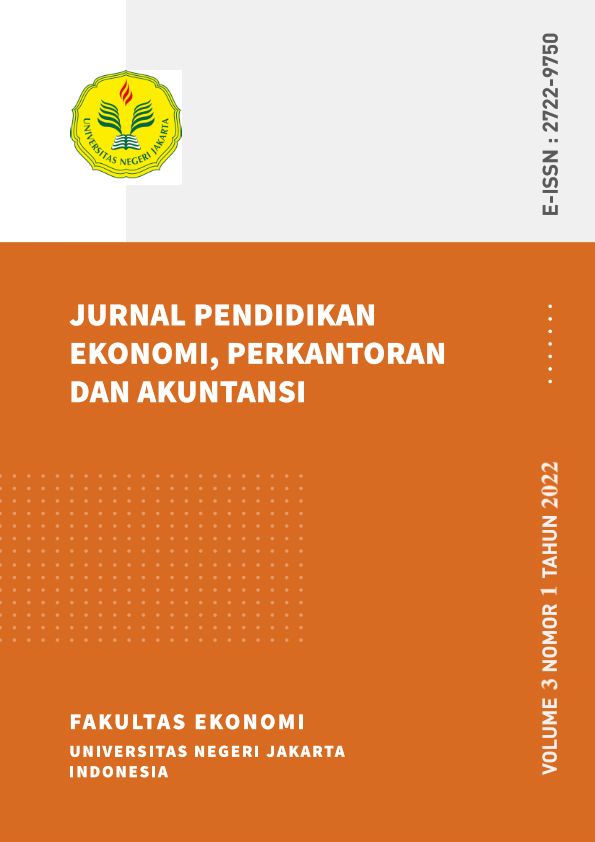THE EFFECT OF SELF-EFFICACY ON THE UTILIZATION OF MOBILE BANKING WITH THE TAM APPROACH ON FE UNJ STUDENTS
DOI:
https://doi.org/10.21009/jpepa.0301.20Keywords:
Self Efficacy, Perceived Usefulness, Perceived Easeof Use, Behavioral Intention to Use, TAM ModelAbstract
The purpose of this study was to determine the effect of self-efficacy on the use of mobile banking with the TAM approach on students of the Faculty of Economics, UNJ. The research method used is a survey method with a quantitative approach, the population used is all students of the Faculty of Economics, Jakarta State University class 2018. The model in this study uses SEM (Structural Equation Modeling) which is operated with the SmartPLS version 3.0 program for hypothesis testing. The data analysis technique used is the first measurement of the outer model which consists of Cronbach's alpha with a value > 0.7. Average Variance Extracted (AVE) value > 0.5 and Composite Reliability value > 0.7. The two measurements of the inner model consist of R2 with a value of line I of 0.541, line II of 0.530 and line III of 0.671. Then the f2 value of self-efficacy towards perceived usefulness is 0.788, self-efficacy to perceived ease of use is 0.183, perceived usefulness to intention to use is 0562, perceived usefulness is to perceived ease of use is 0.196 and perceived ease of use is intended to be 0.166. The conclusion of this study is that all hypotheses in the study can be accepted.









